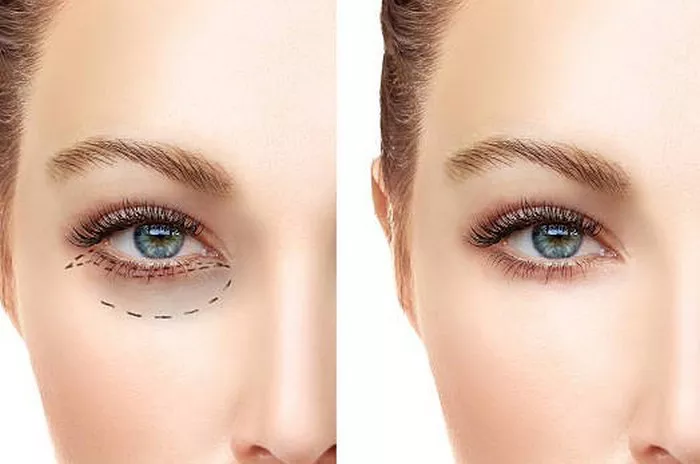Transconjunctival blepharoplasty is a specialized surgical procedure designed to rejuvenate the appearance of the lower eyelids. Also known as transconjunctival lower eyelid blepharoplasty, this technique is a variation of traditional eyelid surgery (blepharoplasty) that specifically addresses concerns related to the lower eyelids. In this comprehensive guide, we will explore what transconjunctival blepharoplasty is, its benefits, the surgical process, recovery, and potential complications associated with the procedure.
Understanding Transconjunctival Blepharoplasty
Transconjunctival blepharoplasty is a surgical technique that focuses on improving the appearance of the lower eyelids by addressing issues such as under-eye bags, puffiness, and loose or excess skin. Unlike traditional blepharoplasty, which involves external incisions along the lower eyelid skin, transconjunctival blepharoplasty is characterized by an incision made on the inside of the lower eyelid, along the conjunctiva. This internal approach offers several advantages, including minimal visible scarring and reduced trauma to the lower eyelid skin.
Key Benefits of Transconjunctival Blepharoplasty
Minimal Scarring: Since the incision is made on the inside of the eyelid, there are no external scars, making this technique an attractive option for those concerned about visible scarring.
Lower Eyelid Tightening: Transconjunctival blepharoplasty allows the surgeon to access and tighten the lower eyelid’s underlying support structures, addressing issues like sagging or drooping lower eyelids.
Fat Repositioning or Removal: Surgeons can reposition or remove excess fat deposits contributing to under-eye bags or puffiness, resulting in a more youthful and refreshed appearance.
Quick Recovery: Recovery time is generally shorter compared to traditional blepharoplasty, and patients can typically resume normal activities within a few weeks.
Natural-Looking Results: The procedure aims to provide natural-looking results, preserving the patient’s unique facial features while enhancing the appearance of the lower eyelids.
The Transconjunctival Blepharoplasty Procedure
The transconjunctival blepharoplasty procedure is typically performed on an outpatient basis and involves the following steps:
Anesthesia: Local anesthesia with sedation or general anesthesia is administered to ensure patient comfort throughout the procedure.
Incision: An incision is made along the inside of the lower eyelid, specifically along the conjunctiva, which is the clear membrane covering the inner surface of the eyelid.
Fat Manipulation: Depending on the patient’s unique needs, the surgeon may reposition or remove excess fat from the under-eye area. This step helps eliminate under-eye bags and puffiness.
Skin Tightening: The surgeon may tighten the lower eyelid’s underlying support structures, such as the orbicularis muscle, to address any sagging or drooping.
Incision Closure: Once the necessary adjustments are made, the incision is closed with dissolvable sutures. There are no external stitches or visible scars.
Recovery After Transconjunctival Blepharoplasty
Recovery following transconjunctival blepharoplasty is typically quicker and less uncomfortable compared to traditional eyelid surgery. Here are some essential aspects of the recovery process:
Initial Recovery: Patients may experience mild swelling, bruising, and discomfort in the days immediately following the procedure. Applying cold compresses and taking prescribed pain medications can help manage these symptoms.
Resuming Activities: Most patients can return to work and regular activities within one to two weeks, depending on individual healing. Avoid strenuous exercise and heavy lifting during the initial recovery period.
Follow-up Appointments: Patients are typically scheduled for follow-up appointments to monitor healing progress and ensure optimal results.
Scar Care: There is no visible external scarring with transconjunctival blepharoplasty. Patients are advised to keep the surgical area clean and avoid any excessive rubbing or pressure on the eyes.
Final Results: While initial improvements are noticeable within a few weeks, final results may take several months to fully manifest as residual swelling subsides.
Potential Complications and Considerations
Transconjunctival blepharoplasty is considered a safe and effective procedure. However, as with any surgical intervention, there are potential risks and considerations:
Infection: Although rare, there is a minimal risk of infection. Proper post-operative care and adherence to hygiene guidelines can reduce this risk.
Dry Eyes: Some patients may experience temporary dryness or irritation of the eyes following the procedure. This typically resolves as healing progresses.
Asymmetry: Achieving perfect symmetry between the two lower eyelids can be challenging. Minor differences in appearance may persist.
Under-Correction or Over-Correction: In some cases, the desired outcome may not be achieved on the first attempt, and additional procedures may be required.
Scarring Inside the Eyelid: While external scarring is minimal, there may be occasional scarring inside the eyelid.
Conclusion
Transconjunctival blepharoplasty is a specialized surgical technique designed to improve the appearance of the lower eyelids with minimal visible scarring. It offers numerous benefits, including reduced recovery time and natural-looking results. Individuals considering this procedure should consult with a board-certified plastic surgeon experienced in eyelid surgery to determine if transconjunctival blepharoplasty is the right choice for their aesthetic goals. While potential risks exist, proper surgical technique and post-operative care can help ensure a successful outcome and enhanced lower eyelid appearance.


